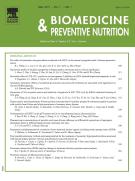Modulation of microRNA 21, 125 b and 451 expression by quercetin intake and exercise in mice fed atherogenic diet - 13/08/14
 , Halleh Mahini
, Halleh MahiniAbstract |
Introduction |
Quercetin is shown to exhibits wide range of metabolic functions including its antioxidant and anti-inflammation properties. Paradoxically, exercise which induces a severe oxidative stress resulting in the depletion of plasma and tissue antioxidants is an important deterrent of CVD. We therefore hypothesized that the combination of quercetin and exercise would have favorable impact at the cellular level by augmenting antioxidant/anti-inflammatory pathways involving set of microRNAs signaling. The discovery of microRNAs (miRs), a little more than a decade ago, has dramatically changed our perspective of gene expression regulation, and has provided a unique opportunity for researchers to address some of these unexplained metabolic ambiguities.
Study design |
Forty C57BL6 LDL−/− mice fed atherogenic diet. Mice were divided into four groups (10 each) as follows: control mice (NN), left untreated; control quercetin group (NQ), orally supplied with 100μg/day of quercetin without exercising; exercise group without quercetin (NE), and exercise group with quercetin (EQ) supplements. The exercise groups were run on a treadmill for 30minutes, 15m/m/5days/week for 30days. All animals were on atherogenic diet containing 1.5% cholesterol with total 42% Fat Kcal Diet. At the end of the month of treatment, mice were sacrificed, liver, and aorta were collected for genes micRNAs analysis.
Results |
miR-21 was significantly (P<0.05) up-regulated in both liver and aorta samples, similar trend were observed in animals on exercise with or without the intake of quercetin (P<0.05); however miR-451 was significantly (P<0.05) down-regulated in mice livers.
Conclusion |
Exercise and quercetin intake modulates the expression of miR-21, 125b and 451.
Le texte complet de cet article est disponible en PDF.Keywords : Atherosclerosis, MicroRNA, Quercetin, Exercise, Antioxidants, Inflammation
Plan
Vol 4 - N° 3
P. 359-363 - juillet 2014 Retour au numéroBienvenue sur EM-consulte, la référence des professionnels de santé.
L’accès au texte intégral de cet article nécessite un abonnement.
Déjà abonné à cette revue ?

